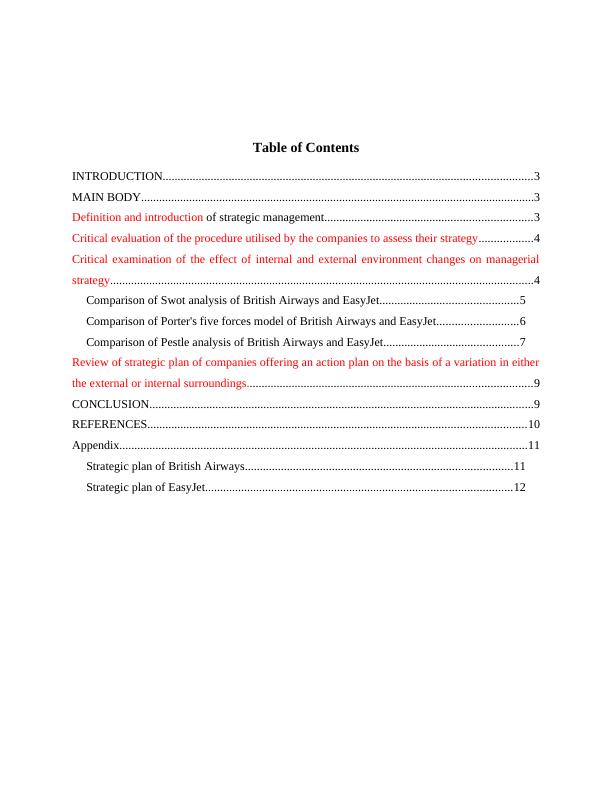Strategic Management: A Comparison of British Airways and EasyJet
13 Pages4355 Words193 Views
Added on 2023-06-05
About This Document
This report compares the strategic management of British Airways and EasyJet, including SWOT, PESTLE, and Porter's Five Forces analyses. It examines the effect of internal and external environmental changes on managerial strategy and evaluates the procedure used by the companies to assess their strategy.
Strategic Management: A Comparison of British Airways and EasyJet
Added on 2023-06-05
ShareRelated Documents
End of preview
Want to access all the pages? Upload your documents or become a member.
Strategic Planning for Tesco: Impact of Internal and External Environment on Organisational Strategy
|12
|3716
|330
Strategic Management (Distinction Criteria) for BSc (Hons) Business Management Top up - BMP6002
|10
|3277
|299
Strategic Planning in Tesco: A Critical Assessment of Internal and External Environment
|13
|3469
|80
Strategic Management and Impact of Internal and External Environment on ASOS Plc
|14
|3651
|422
Strategic Management and Planning: A Critical Assessment of Unilever's Business Plan
|12
|3495
|260
Strategic Management Individual Report
|11
|3017
|407




